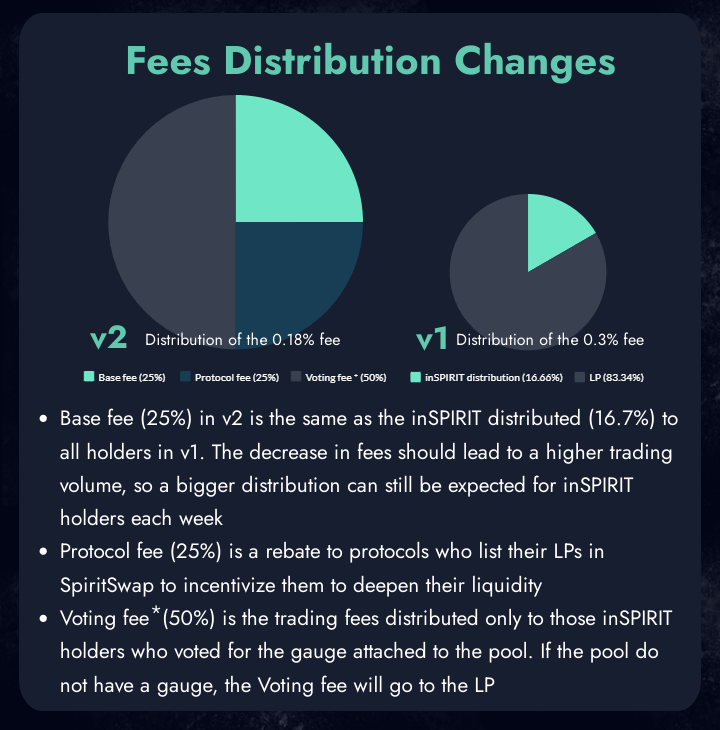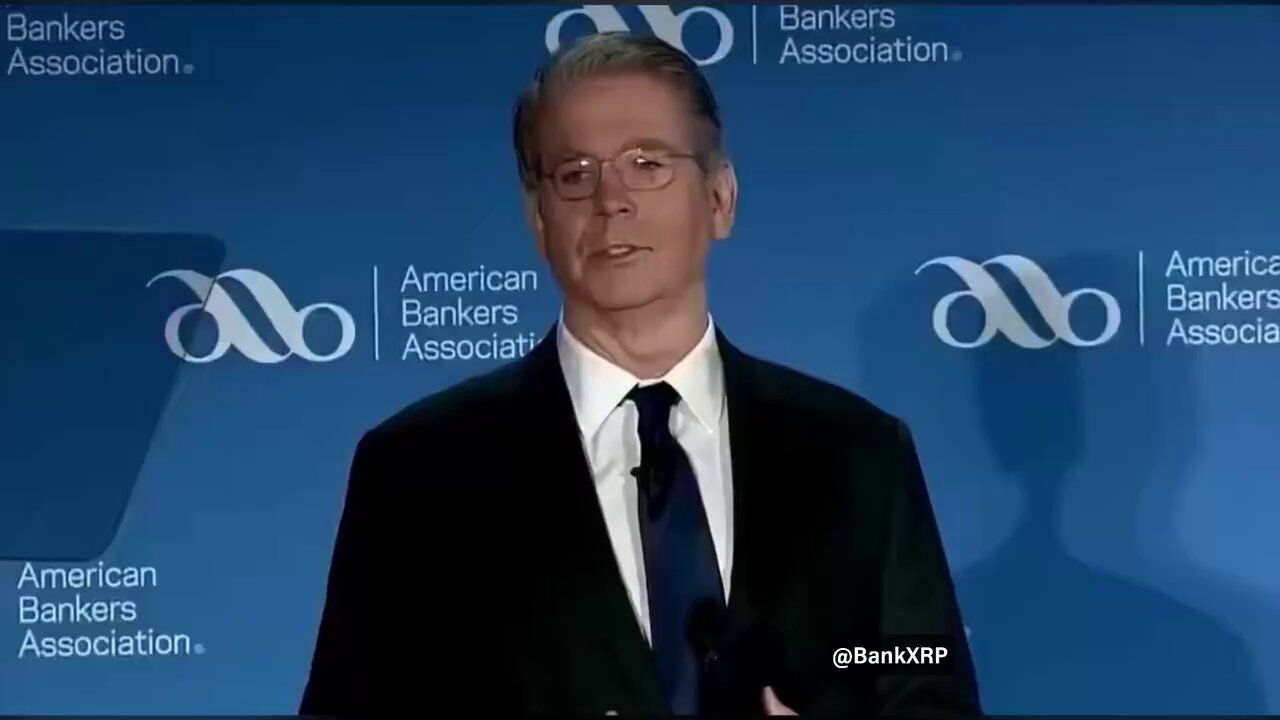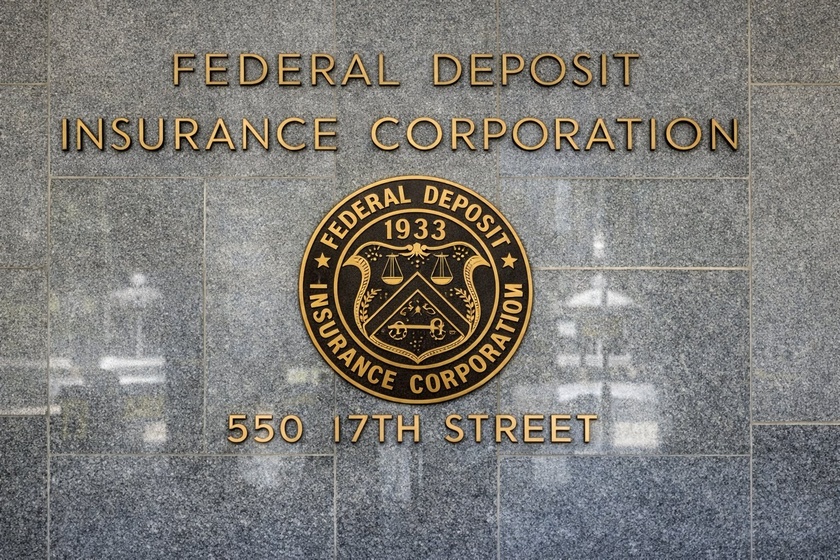Fantoms SpiritSwap V2 is LIVE — UI & protocol upgrades
Users can now enjoy V2 via the following link: beta.spiritswap.finance
SpiritSwap has come a long way since its inception on the Fantom network one year ago. This past year has been full of highs and lows but at the end of the day the Spirit team has loved sharing every minute of this journey with you all! To celebrate our continued ingenuity and drive to consistently add value to the Fantom ecosystem, SpiritSwap is pleased to present V2 and subsequent protocol upgrades.
This project in itself has been a monumental effort by our development team, all coordinated by our core team members in their respective fields. This product is a result from months of blood, sweat, tears and a severe lack of sleep. To start, SpiritSwap would like to thank everyone involved in the development of this major overhaul.
This article explains our reasons for the V2 upgrade, what the upgrade entails, the key differences between V1 & V2, along with the architectural upgrades to the AMM infrastructure and the underlying updates to some of the contracts.
The work doesn’t stop here. Upon deploying V2, the team will be getting straight to work on V2.1 upgrades, which consist of functionality upgrades that would have taken too long to implement in the V2 rollout, balance is key.
V2 TLDR 1 minute ;
>New AMMs in the mix
>Protocol Fees: Giving back to the protocols, whenever a protocol lists with us, SpiritSwap rebates protocols` 25% of the fees their pools generate
>Implementation of a master router. This means we can add new AMMs (like balancer weighted and linear or concentrated AMMs) without having to upgrade our UI or contracts.
>Fee reduction from 0.3% to 0.18% for Classic AMM (customizable fees down to 0.01%)
>Stable AMM introduced at 0.04% fees (customizable fees down to 0.01%)
>More fees for inSPIRIT holders from 0.05% — 0.135% (Includes both base fee and vote fee)
>Non-dilutive tokenomics for inSPIRIT holders through ve(3,3) model
>Making the inSPIRIT model more sustainable: Using a mix of solidly voting models
>Introduction of Permissionless Spirit farms
> In-built bribe UI
> Gauge proxy divided into 3 isolated gauge proxies for greater balance of emissions
V2.1 TLDR;
>Introduction of weighted pools
>Introduction of linear pools — better capital efficiency by feeding to lending network
>Introduction of Permissionless Ecosystem farms
> Upgrades to bribes (% based bribes, limit bribes)
V2 will be released in two stages. The first being a public beta, which is live as of today. This gives the public the ability to switch between V1 and V2 at their leisure. The current plan is for V2 beta to be live for 2 weeks, allowing the team to receive feedback and bug reports from the community. Over this time, the development team will dedicate 95 % of development resources to remedy any reported bugs from the community. Upon this round of community testing being complete, the team will redeploy our URL to face our V2 product thus making V2 our official application moving forward.
V2 TLDR 5 minutes :
Huge overhaul of fee structure with the aim to pass as much value back to inSPIRIT holders and protocols who support SpiritSwap.
Notably our vAMM fee has been reduced from 0.3% — 0.18%. This provides a positive feedback loop between aggregator traffic, volume and fees. The introduction of the new Vote Fee further rewards inSPIRIT holders who vote on gauges that have the ecosystem’s best interest at heart. The introduction of the Protocol Fee further incentivizes protocols to add liquidity with SpiritSwap, establishing a pool of deep liquidity for more optimal trade pricing.
Bridge swap upgrade:
SpiritSwap’s bridge aggregator will pave the way for a myriad of other chains to be added to the bridge. As a part of this upgrade, people will now be able to simultaneously swap while they bridge. For example, users can now send BNB from Binance Smart Chain to Fantom Opera, but in the same process, convert this BNB to FTM with one click.
We have 2 options — cheaper fees or faster transactions.
Bribe UI:
Isolated gauge proxies:
What was a “singular gauge proxy” for boosted farms, has now been segregated into 3 isolated gauge proxies for greater control over emissions on pairs that are crucial to the SpiritSwap ecosystem.
Running snapshots and facilitating airdrops for bribes is cumbersome and laborious. It’s not a good use of developer time. As such, the bribe process has been simplified for both developers and the community. Developers of projects who have gauges can now offer a bribe and set this up directly within our inSPIRIT UI. Subsequently, inSPIRIT holders who vote on farms with active bribes can also collect their voting fees directly within the inSPIRIT page, along with their inSPIRIT weekly rewards.
Isolated gauge proxies:
What was a “singular gauge proxy” for boosted farms, has now been segregated into 3 isolated gauge proxies for greater control over emissions on pairs that are crucial to the SpiritSwap ecosystem.
Real Yield — Anti dilution for inSPIRIT holders:
This aims to further stimulate the adoption of inSPIRIT for new and existing participants in our ecosystem. The Real Yield model sees emissions redirected to ensure loyal inSPIRIT holders are never diluted by farmers.
In depth overview 20 minutes
UI and codebase upgrades.
Soully has undergone some cosmetic surgery, SOME being an understatement. As you will notice, the entire layout of the SpiritSwap application has changed for a more simplified, crisp, clean and professional look. On top of this, we have rebuilt the ENTIRE code base from scratch, which is why V2 has been such a long drawn process.
In layman’s terms, by building this code ourselves (rather than relying on forked code) we understand the mechanics of this code much better, thus are able to execute a rapid turnaround time on fixing bugs and expediting deployment of new features. Needless to say the functionality of our DEX will now be much quicker than V1.
Offering a user interface that embodies the playful nature of Soully, while highlighting the key elements users expect from a DEX, is where inspiration came from. We wanted to keep things as minimalistic as possible, meanwhile offering the layers of detail that more seasoned DeFi users have come to expect from an aspiring tier 1 DEX.
The layout of the application was given careful consideration, specifically focusing on the flow of interaction. As users will notice, their journey within the application begins where all DeFi users would expect, their portfolio. Our home page now doubles as a portfolio page, which gives a detailed overview of all user positions including single held assets, LP positions, farm, winSPIRIT, lending and borrowing, as well as eventual ApeMode positions. This will offer all users a more enhanced overview of their positions on SpiritSwap and all key components / features that are offered as a protocol.
The new landing page will feature an overview of ALL key components that SpiritSwap brings to market. Included in these key components is user education, as a lot of users are new to defi. Ensuring users who arrive at our landing page have immediate access to information they need to make informed decisions is of immense importance. As such, when new users initially arrive at the landing page before entering the application, they are offered a myriad of information that details each individual feature via the ability to click on pop up infographic cards explaining the intricacy of each feature.
Basic AMM features like Swap, Bridge, Liquidity and Farms, still retain their standard functionality but with a new look and feel to the design. The focus was to keep as much of this functionality as familiar as possible for our existing users.
However you will notice that there are some new feature additions to farms and liquidity, which aligns with some of our new AMM architecture. These will be covered in a separate paragraph related to AMM upgrades.
The inSPIRIT page has also undergone a huge facelift, now offering far greater user experience. Users can now toggle between locking more SPIRIT or increasing their delegation period to eliminate any confusion. The process of locking inSPIRIT has now also been broken down into a simple 3 step process, replicating a walkthrough type approach for users participating in our inSPIRIT model. This makes the process seamless, easy to understand and eliminates any confusion for those who are new to the ecosystem or struggle to comprehend the process.
The farm voting panel has also been updated to offer improved UX via farm voting rebalance exclusion. Currently users must exclude farms they don’t want to vote for, otherwise vote percentages will automatically be rebalanced accordingly. This has led to a cumbersome and frustrating experience for V1 users and has been something we have strived to improve since the initial inSPIRIT deployment.
My farms toggle function: This allows users to automatically flip a switch that only displays their active farms in the voting panel. This improves UX as users no longer need to scroll through endless farms picking out the ones that are pertinent to their investment strategies, but rather streamline this approach by only displaying their active positions. This also helps users easily identify the most lucrative farms to vote for in order to capture the largest amount of voting fees.
AMM upgrades.
SpiritV2 will launch with two AMMs. A variable AMM (vAMM) for variable liquidity pairs (vLP) and a stable AMM (sAMM) for stable liquidity pairs (sLP). This AMM is a modified version of Solidly with an upgrade to the fee structure.
Our AMM architecture is preceded with a master router for swaps on SpiritV2. This means we can add new AMMs (like balancer weighted/linear pools or new types of AMMs) without having to upgrade our UI or contracts. They can just be added in the master router.
In this new AMM format, swap fees now accumulate outside of LP tokens in an LP Fee contract. This is unlike our old (UniV2) AMM in which fees are compounded directly into the LP tokens themselves. In this architecture each LP Pair contract has an associated LP Fee contract to handle this logic. Breaking out the accumulated swap fees from the LPs themselves allows us to implement our LP voting logic into the gauge system (more on that later).
The sAMM will allow for the ability to set different fees than the vAMM which Solidly didn't allow for. We see this as an opportunity to fix a broken system, which is why the SpiritSwap AMM’s offers variable fee functionality. The thought process here is that by utilizing the (X²+Y²)(XY)/2=K formula, we achieve a higher concentration of liquidity resulting in tighter spreads and lower impermanent loss. This means we can offer a far better execution on swaps (fees/slippage).
Further to this, SpiritSwap also achieves the ability to offer peg support, meaning SpiritSwap can now offer more effective pricing on stable trades, but also the ability to offer a more targeted solution to tokens that require peg maintenance. With this integration, winSPIRIT pairs will achieve more effective peg maintenance. This will now entice winSPIRIT pairs to stay where they belong and retain profitability on these pairs being traded, meaning inSPIRIT holders won’t miss out on the fees captured by any trading of inSPIRIT pairs that are currently based on other AMM’s.
By offering a more competitive pricing delivery on certain stable pairs, SpiritSwap will subsequently be more competitive in the aggregator space, meaning fees we were missing out on via DEX aggregation, will be a thing of the past.
Better pricing = more fees captured by proxy of DEX aggregation.
Further to this AMM architecture upgrade, SpiritSwap intends to add another layer of architecture to the mix in V2.1 that will allow for more enhanced trading functionality, offering the ability for us to bootstrap enhanced trader UI onto our front end. For now that update will remain as a surprise for a later day.
Fee structure:
The fee structure for SpiritSwap has also undergone some upgrades. The upgraded AMM has variable fees that can be updated by governance and can go as low as 0.01%. This will help us remain competitive with fees and we won’t have to redeploy even if our competitors lower their fees. Unlike Solidly, the vAMM and sAMM can have different fees, this makes sense because stable swaps should have lower fees than variable swaps because they incur less IL.
Moving forward, SpiritSwap will be reducing fees from 0.3% to 0.18% for our classic vAMM while establishing the ability to have an even more competitive fee for our new sAMM at a respectable 0.01%.
The reason for this stems from the realization that it’s better to capture a smaller slice of a bigger pie rather than trying to take the entire pie for ourselves. This update will see a more optimal pricing on trades, meaning that we capture a larger amount of aggregator traffic (fees that are currently being missed out on).
The distribution of fees has also undergone a change. The current model sees fees allocated as follows:
5 / 6 of fees are currently given back to LP’s
1 / 6 of fees are currently used to buy back SPIRIT at market rate and distribute to inSPIRIT holders during our weekly reward distribution.
vAMM & sAMM fee restructure:
Moving forward, Fees accumulate outside of LP token (unlike uniV2 which compounds fees directly into LP). Fees will be allocated as follows:
25 % will go to our base fee:
The base fee is exactly the same as the current inSPIRIT distribution. These are the SPIRIT rewards that all inSPIRIT holders collect at the end of each distribution epoch. It is pertinent to note that with the reduction in fee we are hopeful our routers will collect a higher volume of trade traffic from aggregators. Due to increased volume by virtue of a reduced fee, this increase in volume is expected to capture a higher distribution for inSPIRIT holders each week.
25% of fees will go to the new Protocol Fee model:
The protocol reward fee model is a rebate to protocols who list LP’s with us, for example Liquid Driver.
Out of all fees collected on Liquid Drivers liquidity pools, 25% of these will be given back to the protocol who lists with us (in this example Liquid Driver).
Read more at: https://spiritswap.medium.com/spiritswap-v2-is-live-ui-protocol-upgrades-bec064ebba61




































